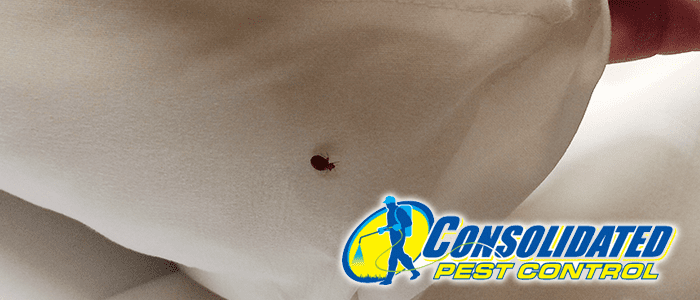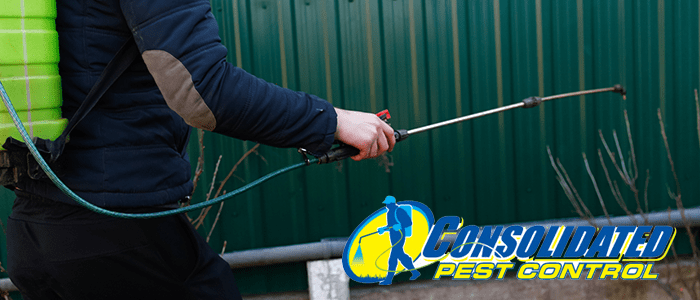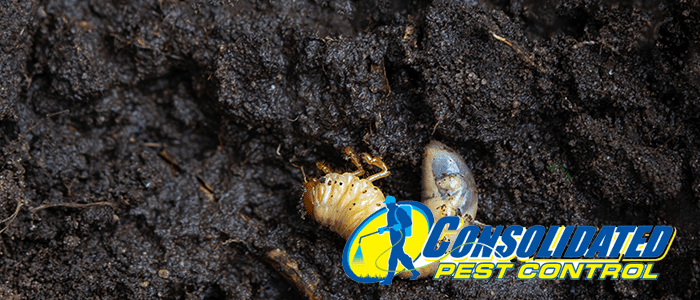
Don’t Let Bed Bugs Take Over Your Home: What to Do If You Suspect You Have a Bed Bug Infestation
Are you waking up with itchy bumps on your skin? Do you see tiny brownish-red insects crawling on your bedsheets or mattress seams? Unfortunately, you may be dealing with a bed bug infestation, one of the most dreaded pests that can invade your home. Bed bugs can cause not only physical discomfort but also mental distress, since an infestation can be challenging to treat and eradicate.
Luckily, if you suspect you have a bed bug problem, Consolidated Pest Control is here to help.
Section 1: Introduction
In this article, we will guide you through the essential steps you should take if you suspect you have bed bugs in your property. First, we will explain what bed bugs are and how they infest homes. Then, we will show you how to confirm a bed bug infestation, identify the signs of bed bugs, and differentiate them from other insects that resemble them. Finally, we will provide you with practical and effective methods to eliminate bed bugs and prevent them from coming back.
Section 2: What are Bed Bugs
Bed bugs are small and wingless insects that feed on the blood of warm-blooded animals, including humans. They are oval-shaped, about the size of an apple seed, and often reddish-brown in color. Bed bugs hide during the daytime in cracks, crevices, and bedding, and emerge at night to feed on their hosts while they sleep. Bed bugs can live for months without feeding, making them challenging to eradicate.
Section 3: How Bed Bugs Infest Homes
Bed bugs can invade homes in various ways. They can hitchhike on clothing, luggage, used furniture, or other objects that carry them from one place to another. Bed bugs can also spread from an adjacent apartment or room, especially in multi-unit buildings where walls and floors are shared. Bed bugs are not a sign of poor hygiene or cleanliness since they can thrive in any environment if they find a source of blood to feed on.
Section 4: Confirming a Bed Bug Infestation
If you suspect that you have bed bugs in your property, the first thing you should do is confirm their presence. The best way to do this is by performing a thorough inspection of your bed, furniture, and other areas where bed bugs are likely to hide. Look for live bugs, skins, eggs, and fecal stains, which resemble black dots on fabric or mattress seams.
If you’re unsure whether the infestation is severe, you can also use bed bug traps or monitors, which are designed to attract and trap bed bugs by releasing a chemical lure. Check the traps regularly to see if you catch any bed bugs. If you find even one bed bug or multiple signs, you probably have an infestation that needs immediate attention.
Section 5: Differentiating Bed Bugs from Other Insects
Bed bugs are often confused with other insects that resemble them in size, shape, or color, such as fleas, ticks, cockroaches, or carpet beetles. However, bed bugs have some distinct characteristics that set them apart:
- Bed bugs are primarily nocturnal and feed on blood, while fleas and ticks bite during the day and can jump long distances.
- Bed bugs leave small, red, and itchy bites in a cluster or line, while mosquito bites are usually solitary and more swollen.
- Bed bugs shed their skins and leave fecal stains that resemble dark spots or smears on bedding, while cockroaches leave droppings that resemble small pellets or coffee grounds.
- Bed bugs have a distinct sweet, musty odor, while carpet beetles do not have any particular scent.
Section 6: DIY Methods to Get Rid of Bed Bugs
If you have a mild infestation, you may be able to get rid of bed bugs by using DIY methods, such as:
- Vacuuming: Use a powerful vacuum to suck up any bed bugs, eggs, or fecal stains you see. Make sure to dispose of the vacuum contents in a sealed bag outside your home.
- Washing and drying: Launder all your bedding, clothing, and curtains in hot water (at least 120°F), and dry them on the highest heat setting for at least 30 minutes. This will kill any bed bugs and their eggs.
- Steaming: Use a steam cleaner on your mattress, furniture, and floors to kill bed bugs and their eggs. Make sure to steam at a temperature of at least 160°F, and move the nozzle slowly over the surface for maximum coverage.
However, these DIY methods may not be enough to eliminate severe infestations, and professional help may be necessary. Moreover, DIY methods may spread bed bugs to other areas of your home if not done correctly, causing the infestation to worsen.
Section 7: Professional Pest Control for Bed Bugs
Consolidated Pest Control has extensive experience in combating bed bug infestations. Our trained technicians use the latest and safest methods to eliminate bed bugs and prevent their return. Here are some of the effective pest control methods we may use:
- Chemical treatments: We use EPA approved pesticides that are safe for humans and pets but deadly to bed bugs. Our technicians will apply the chemicals in areas where bed bugs hide and reproduce, such as cracks, crevices, and walls.
- Heat treatments: We use specialized equipment that raises the temperature of the affected area to at least 120-130°F, which kills bed bugs and their eggs without damaging your property. Heat treatments are safe and eco-friendly and can treat even severe infestations.
- Fumigation: We may use fumigation in extreme cases, where other methods have failed. Fumigation involves sealing the property and introducing a gas that kills all bed bugs and other pests. Fumigation can be dangerous and requires professional expertise and equipment.
Section 8: Preventing Future Bed Bug Infestations
After eliminating bed bugs from your property, it’s crucial to take measures to prevent them from coming back. Here are some tips:
- Inspect used furniture, clothing, and other objects before bringing them into your home.
- Seal cracks, crevices, and gaps in walls, floors, and furniture to eliminate hiding places for bed bugs.
- Use bed bug-proof mattress and box spring encasements that can trap bed bugs and prevent them from feeding on you.
- Regularly vacuum, launder, and steam clean your property to eliminate any bed bugs or eggs that may sneak in.
Section 9: Conclusion
Bed bugs are a nightmare to deal with, but with prompt action and professional help, you can eliminate them from your home and regain your peace of mind. Consolidated Pest Control is committed to providing you with the best bed bug pest control and prevention services.
Contact us today to schedule an inspection and get a personalized plan that suits your needs and budget. So why let bed bugs take over your home? You can take control with Consolidated Pest Control.








